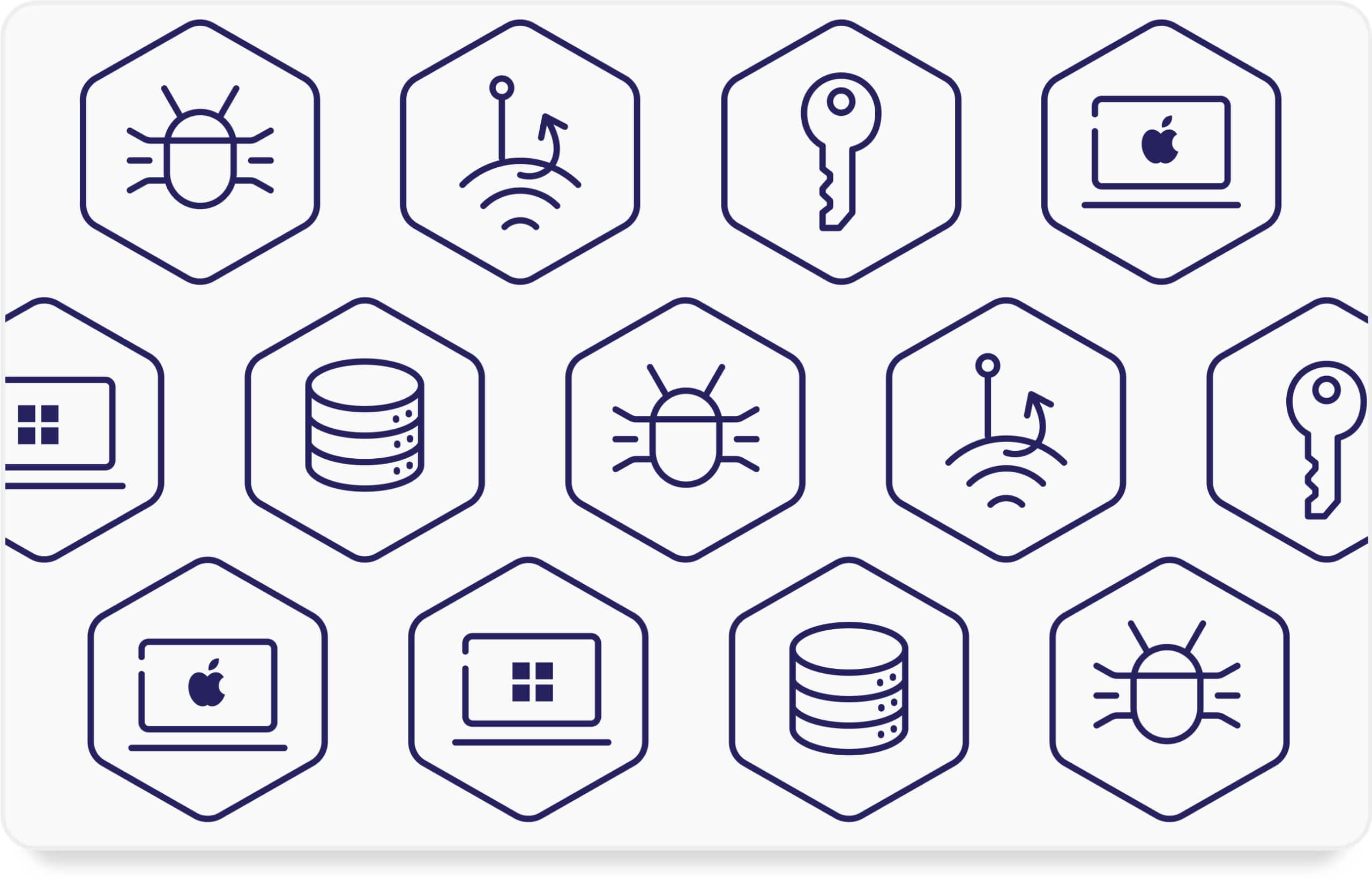Endpoint Detection and Response (EDR), sometimes called Endpoint Threat Detection and Response (ETDR) is a cybersecurity technology that continuously monitors devices like laptops, desktops, servers, and mobile phones (endpoints) for malicious activity. It detects and investigates any suspicious activities on these devices usually through automation.
What is Endpoint Detection and Response?
EDR is becoming increasingly important in today’s cyber landscape, as cyberattacks are becoming more sophisticated and targeted. EDR can help organizations of all sizes protect their valuable data and systems from a wide range of threats. While there is no specific categorization for EDRs, there are a few types to consider:
- On-premises: The EDR software is installed on the organization’s own servers. This gives the organization full control over the data and security, but it can also be more expensive and complex to manage.
- Cloud-based: The EDR software is hosted by a third-party vendor. This is a more affordable and easier-to-manage option, but the organization may have less control over the data and security.
- Hybrid: Combines on-premises and cloud-based deployment. This can provide the benefits of both models, such as increased control and scalability.
Think of your endpoint devices as your body, and EDR as your immune system. Just like your immune system constantly fights off pathogens to keep you healthy, EDR continuously monitors your devices for malicious activity and takes action to neutralize it.
White blood cells patrol your body collecting information about potential threats like viruses and bacteria. Similarly, EDR agents collect data about suspicious activity on endpoints.When your immune system encounters a pathogen, it identifies it as a threat and triggers an immune response. EDR analyzes the collected data and identifies suspicious patterns that indicate a cyberattack.
Your immune system attacks and destroys the pathogen to prevent it from causing harm. EDR can take various actions to neutralize a cyberattack, such as isolating infected files or blocking malicious connections.
Why should businesses care about EDR?
Cybersecurity threats are no longer exclusive to giant corporations. In fact, small businesses are increasingly becoming targets for cyberattacks due to their perceived vulnerability and valuable data. This is where Endpoint Detection and Response (EDR) comes in as a crucial line of defense for protecting your critical assets.
Reason #1: Constant Vigilance
EDR continuously monitors all your devices, not just their perimeters, for suspicious activity. EDR uses advanced analytics and machine learning to identify even the subtlest anomalies. This goes beyond traditional antivirus that relies on pre-defined signatures of known threats.
Reason #2: Rapid Response
If EDR detects a threat, it can take immediate action to contain the damage, like locking down the affected device, alerting security personnel, and even automatically remediating the attack. EDR provides detailed logs and reports of all activity, allowing you to investigate incidents and understand how they happened.
Reason #3: Ideal Solution When Resources Are Limited
Unlike large enterprises with dedicated security teams, small businesses often lack the manpower and expertise to constantly monitor their systems for threats. EDR automates much of the heavy lifting, providing 24/7 protection without needing a security staff on the clock.
Reason #4: Compliance Requirements
Many industries and regulations now require businesses to implement adequate security measures. EDR can help you meet these compliance requirements and demonstrate your commitment to data security.
EDR and Your Broader Cybersecurity Program
EDR is no longer a luxury for large corporations; it’s a necessity for any business that wants to protect its sensitive data and operations. Here is how it fits into your broader cybersecurity program:
Least Privilege Principle
Least privilege is a cybersecurity principle that advocates providing users, applications, and processes with only the minimum level of access or permissions necessary to perform their tasks. EDR solutions contribute to the least privilege principle by monitoring and controlling the activities and access levels of endpoints. They can detect and respond to suspicious or unauthorized activities in real-time, preventing potential breaches or unauthorized access attempts. EDR tools help enforce least privilege policies by providing visibility into endpoint activities and ensuring that users and processes are not granted excessive permissions that could lead to security vulnerabilities.
MITRE ATT&CK Framework
The MITRE ATT&CK (Adversarial Tactics, Techniques, and Common Knowledge) framework is a knowledge base of adversary tactics and techniques based on real-world observations. EDR solutions align closely with the MITRE ATT&CK framework by providing capabilities to detect, prevent, and respond to various adversary tactics and techniques.
EDR tools use a combination of behavioral analysis, machine learning, and threat intelligence to identify and mitigate threats based on the MITRE ATT&CK framework. They help security teams understand how adversaries operate and enable proactive defense against emerging threats.
NIST Cybersecurity Framework
The National Institute of Standards and Technology (NIST) Cybersecurity Framework provides guidance for private sector organizations in the United States so that they can assess and improve their ability to prevent, detect, and respond to cyber attacks. EDR solutions help organizations identify assets, vulnerabilities, and threats within their endpoint environment.
They provide visibility into endpoint activities, including process execution, network connections, and file system changes, which helps organizations understand their overall risk posture.
EDR solutions also contribute to protecting endpoints by monitoring for suspicious activities and behaviors in real-time.
EDR solutions are designed to detect and alert on potential security incidents and indicators of compromise (IOCs) across endpoints. EDR solutions also enable organizations to respond quickly and effectively to security incidents detected on endpoints and support businesses in recovering from cybersecurity incidents.
Related Systems or Technologies
Endpoint Protection Platforms (EPP): Endpoint Protection Platforms are comprehensive solutions designed to secure endpoints by combining various security technologies such as antivirus, anti-malware, host-based intrusion prevention systems (HIPS), and firewall capabilities. EPP solutions often incorporate elements of EDR functionality, including threat detection, incident response, and endpoint visibility, providing a more holistic approach to endpoint security.
Next-Generation Antivirus (NGAV): Next-Generation Antivirus solutions go beyond traditional signature-based antivirus approaches by leveraging advanced techniques such as behavioral analysis, machine learning, and threat intelligence to detect and prevent known and unknown threats. NGAV solutions complement EDR by providing proactive protection against malware, ransomware, and other endpoint-based threats, helping organizations stay ahead of evolving cyber threats.
Security Information and Event Management (SIEM): SIEM solutions collect, analyze, and correlate security event data from various sources, including endpoints, network devices, and applications, to provide centralized visibility into security-related activities and threats. EDR solutions can integrate with SIEM platforms to provide endpoint telemetry data, enriching the overall threat detection and response capabilities of the SIEM environment.
Network Detection and Response (NDR): Network Detection and Response solutions monitor network traffic and analyze patterns and behaviors to detect and respond to threats in real-time. While EDR focuses on endpoint-centric visibility and protection, NDR solutions provide complementary visibility into network-based threats and help organizations identify threats that may traverse across endpoints and network infrastructure.
Threat Intelligence Platforms (TIP): Threat Intelligence Platforms collect and analyze threat intelligence feeds from various sources to provide organizations with actionable insights into emerging threats and adversary tactics. EDR solutions can consume threat intelligence feeds from TIP platforms to enhance threat detection and response capabilities, enabling organizations to better understand and mitigate cyber threats targeting their endpoints.
Related Regulations or Compliance Goals
Regulations and standards are increasingly focused on EDR and its role in defending against cyber threats like ransomware, including:
- Region: European Union (EU)
- Requirements:
- Organizations must implement appropriate security measures to protect personal data, including safeguards against cybersecurity threats detected by EDR systems.
- Prompt notification of cybersecurity incidents, including those detected by EDR systems, to the relevant data protection authorities and affected individuals.
- Demonstrating accountability for the security of personal data, including the use of EDR systems to monitor and respond to potential threats.
- Industry: Healthcare (United States)
- Requirements:
- Ensuring the confidentiality, integrity, and availability of electronic protected health information (ePHI) by leveraging EDR systems to detect and respond to cybersecurity threats.
- Conducting risk assessments to identify vulnerabilities that EDR systems can help mitigate.
- Implementing procedures for responding to and recovering from cybersecurity incidents detected by EDR systems to protect ePHI.
- Industry: Payment Card Industry
- Requirements:
- Protecting cardholder data from unauthorized access, which includes using EDR systems to detect and respond to ransomware and other cybersecurity threats.
- Regularly monitoring and testing security systems, including EDR systems, to identify and respond to potential cybersecurity incidents, thus safeguarding cardholder data.









